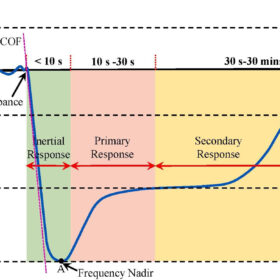Floating photovoltaics for hydrogen generation, storage
New research from the UK shows that Oman could utilize a floating PV farm at the Wadi Dayqah Dam for hydrogen generation. The scientist said the project is technical viabile, although only with advancements in hydrogen energy storage technology could make it economically feasible.
Grid shortages fuel China’s small-scale solar boom
Small-scale, “distributed” PV has become a significant part of the world’s biggest solar market but it is now butting up against the same grid constraints that have frustrated utility-scale PV in China and other parts of the world.
New battery sizing approach for virtual synchronous generators, control-based grid-forming inverters
A group of researchers in Australia has outlined a new methodology to determine the minimum power rating of energy storage systems (ESSs) used for emergency under-frequency response. The ESS size must be calculated to maintain the frequency within the standard operating range.
New tool to estimate cities’ rooftop PV potential considers roof superstructures
Called SolarNet+, the novel framework is claimed to calculate cities’ PV potential not only by finding the orientation of roofs in areal imagery but also by identifying superstructures such as windows or chimneys. It was tested using areal photographs from Munich and Brussels and proved superior to reference frameworks.
Weiheng Ecactus releases three-phase all-in-one battery storage system
The Chinese manufacturer’s new battery energy storage system consists of an inverter ranging in size from 5 kW to 13 kW and a storage system of 10 kWh to 30 kWh. Up to five units can be connected in parallel.
Battery storage on a capacity market
In Germany – but not only there – there is a heated debate about the pros and cons of a capacity market. The German Renewable Energy Association is against it, and recently the German New Energy Industry Association, the DIHK and the EEX energy exchange have also taken a clear stance: Germany does not need a “power plant subsidy program.” In this article, four experts explain why battery storage can also play an important role in a capacity market and make recommendations on how the design of the market can help avoid mismanagement, wrong incentives and unnecessary costs.
Can the grid cope with the surge in electricity demand?
The grid needs to modernize to meet a booming demand for electricity, which is only predicted to grow even further in coming years. IEC Standards are key to help with the transition.
Reactive power management key to advancing grid stability
In its latest monthly column for pv magazine, IEA-PVPS provides a comprehensive overview of the state-of-the-art practices, best practices, and recommendations for managing reactive power amidst the growing integration of distributed energy resources (DERs). The article describes the regulatory frameworks and practical applications, underscoring the essential role of reactive power management in maintaining a stable and efficient power grid.
Data center power loads threaten corporate net-zero goals
The world’s reliance on the internet, the shift to cloud computing, and the emergence of AI all fuel demand for more and more data centers. The International Energy Agency (IEA) projects that by 2026, data centers will consume more than 800 TWh annually, more than double their consumption in 2022. Tristan Rayner takes a look at the role that renewable generation plays in powering a digital world.
Maldives kicks off tender for 15 MWp of grid-tied solar systems
The Maldives is accepting bids from developers to install 15 MWp of solar systems across selected islands under a design, build, finance, own, operate, and transfer basis. The deadline for applications is Oct. 22.










